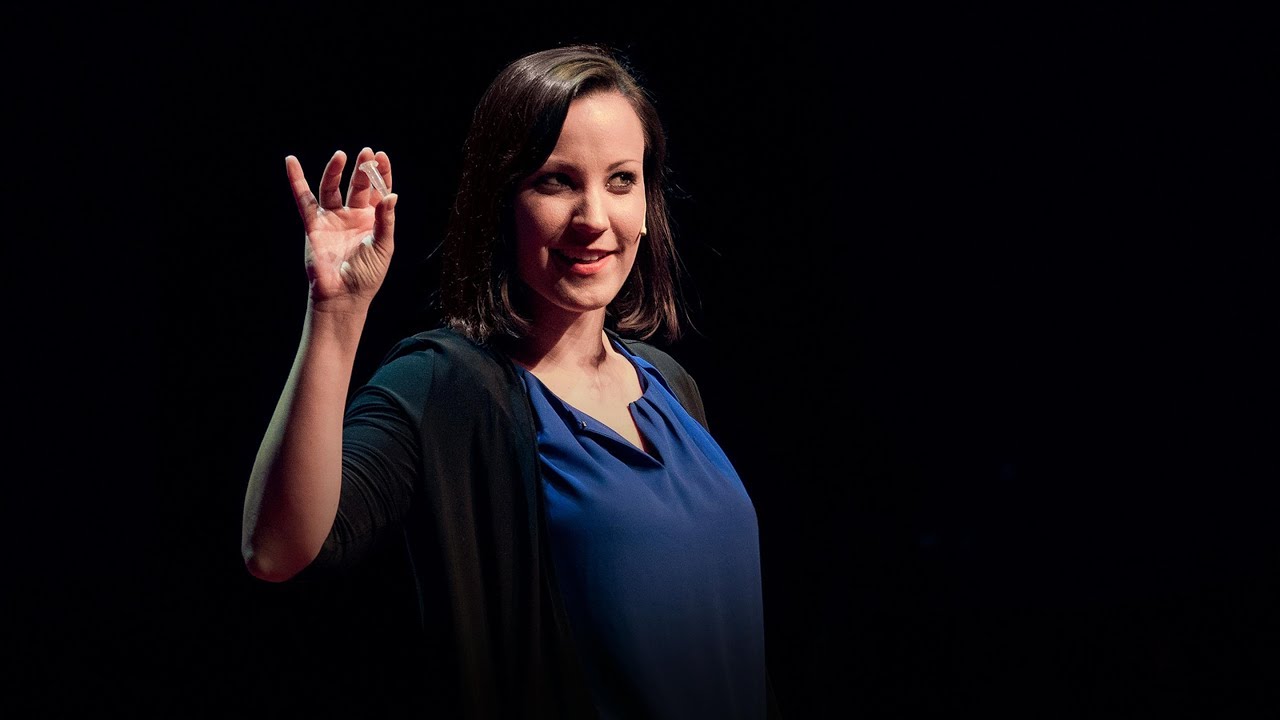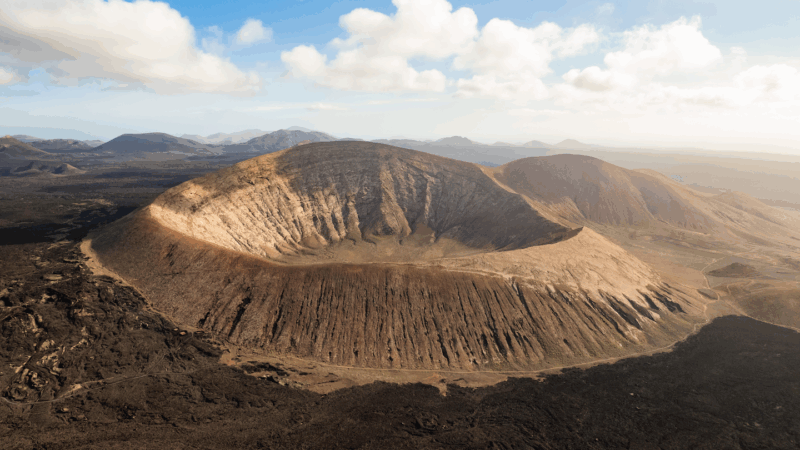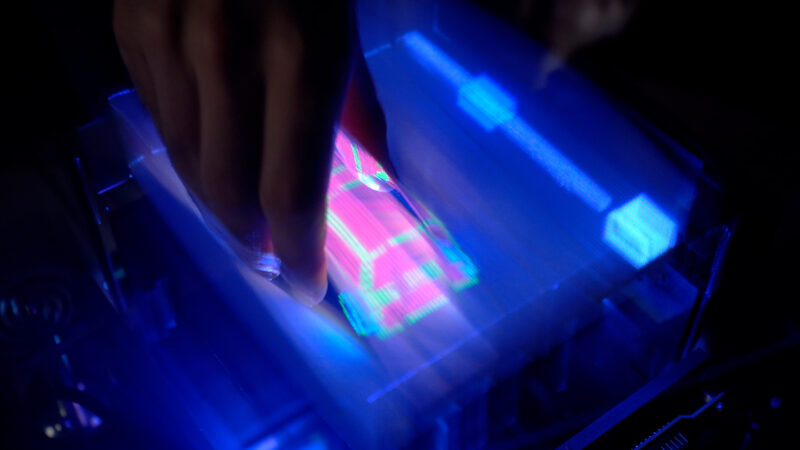Scientists have been looking at DNA to store all types of data — not just biological, but also digital. Yet while DNA is a great storage material, it’s also quite fragile. Water or heat can damage it easily — unless it’s given an amber-like coating. That new idea was borrowed from the 1993 movie Jurassic Park.
In the film, scientists clone dinosaurs from DNA that had been extracted from mosquitoes trapped in amber. Shortly before being locked in that tree resin, millions of years ago, those skeeters had bitten a dino and sucked up some of its blood. The amber then preserved the insects — and the dino DNA inside them. This DNA, in fact, retained most of the information scientists needed to recreate a long-extinct dinosaur. At least in the movie, that is.
Clearly, not everything in the movie was scientifically accurate. But it did spark an idea among scientists at the Massachusetts Institute of Technology in Cambridge. They developed a way to encase DNA in a material that functionally resembled the amber. In theory, they say, this could keep the DNA safe essentially forever. But if you need to read or otherwise “use” it, the DNA can also be extracted in a few hours.
Their method isn’t the only way to store DNA. It is, however, cheaper and faster than other ways, the researchers say.
A mosquito trapped in amber from the Jurassic period was the idea behind the movie Jurassic Park — which was itself the idea behind the latest DNA-storage concept out of MIT.RHJ/iStock/Getty Images Plus
DNA as a storage medium
“If you want to put something [away for] a very long period of time — secure it forever — [DNA] is the way to do so,” says James Banal. He’s a scientist at Cache-DNA in San Carlos, Calif. He took part in the new study when he had worked at MIT.
DNA is the world’s oldest data storage device. It’s inside the nucleus of our cells, holding the information used to make and maintain an individual. For more than 4 billion years, DNA has been storing a staggering amount of information on life. Whether in bacteria, humans or India’s 250-year-old Great Banyan tree of Kolkata — all living organisms have DNA.
But the most amazing thing about DNA is that it can potentially be used to store any type of data. That means not just life-making information, but also text, photos, music, videos, medical records, genetic information — you name it.
What’s more, it’s a far more efficient way to store material than anything humans have created. For example, if every movie ever made was encoded in DNA, it would fit inside the volume of a sugar cube with room to spare.
Putting information into DNA uses a process called encoding. “Your computer stores information in a binary format — zeroes and ones,” notes Karishma Matange. She is a computational biologist at North Carolina State University in Raleigh. “Encoding works to change these zeroes and ones into A, C, G and T.” Those are the abbreviations for the DNA bases: adenine, cytosine, guanine and thymine. Those bases are how DNA stores information. They are similar to how a computer reduces all data to strings of zeroes and ones.
DNA can now store images, video and other types of data
The order of bases in a strand of DNA — called its sequence — spells out the information it holds. Once you know the sequence you need, you can create those DNA sequences in the lab, Matange explains. A special printer can build data-storing DNA strands, one base at a time. It works like a regular printer. But instead of ink, it writes using chemicals that print out those DNA bases.
To pull information back out from the DNA, you reverse the process. First, you sequence the DNA, Matange says. “Sequencing is reading your DNA strands. You put it through a machine. And that machine is going to literally read [each strand], base by base.”
Once you have your sequence, you can then decode it. That means convert it back into binary information, those zeroes and ones that computers understand.
Modern data storage fills whole rooms and even warehouses. DNA can store information in far less space. Encoding every movie ever made in DNA would fit inside the volume of a sugar cube with room to spare.Jason marz/Moment/Getty Images Plus
Securing DNA forever … almost
Currently, scientists can store DNA for long periods. But it takes freezing temperatures, special equipment and dangerous chemicals. This also makes the process very costly. So researchers have been trying to find ways to store DNA at room temperature, such as in silica.
Back in 2021, Banal and a colleague came up with a way to store DNA in silica at room temperature. But it wasn’t quite good enough. It took several days to embed DNA into the silica particles. And it still needed dangerous chemicals to decode the DNA.
So they went back to the lab. Banal calls the new method they came up with T-REX. It’s short for Thermoset-REinforced Xeropreservation. Instead of amber, his team traps the DNA in a material similar to plastic. “Plastics are very durable,” Banal points out. The reason: “Nature doesn’t know how to destroy it.”
T-REX is a faster, easier and less costly way to enclose DNA. It uses a glassy material that can be broken down into its parts when it’s time to retrieve and read the DNA again.
It works a bit like a lock-and-key set. When certain chemicals are added to the jacketed DNA, they work like keys to “open up” the glassy material. This releases the DNA. To prepare for this, Banal’s group add a chemical weakness — the lock — to the glassy material’s structure. “That allows us to [break down] the polymer to get the information back,” Banal says.
To test it, the team encoded the Jurassic Park theme music and a person’s genome into DNA. Then they sealed it in the amber-like glassy plastic. Moisture and heat are DNA’s biggest threats. But the T-REX material repels water. So it keeps moisture out. The researchers also heated it up to 75° Celsius (167° Fahrenheit) and 70 percent humidity over several days.
Later, they retrieved the DNA by adding some safe chemicals to break the polymer jacket down. When they sequenced the DNA inside, the stored information could be read without a problem. And unlike with silica-based DNA-storage materials, the stored information could be read again in a couple of hours.
The best part, Banal says, is that the broken-down material can be reused to store DNA again. “So it becomes a circular kind of chemistry. That is actually very beautiful.”
This video explains how researchers can store large amounts of any type of DNA, together with the history of the idea, which goes back many, many decades. It also points to some of the limitations that must be overcome to reliably store data this way.
Is it ready for all of us to use?
The method isn’t yet ready for prime time, says Dina Zielinski at WhiteLab Genomics in Paris, France. As a computational biologist, she creates digital tools to accelerate drug development. Cost is one lingering problem, she notes. Today, synthesizing DNA is still very, very expensive. But she expects those costs to come down soon, especially as the field is moving toward greener methods.
“Instead of toxic, expensive chemical reactions to print DNA, we can use enzymes that exist [in nature],” she says. It’s really just a matter of time, she suggests. Before long, writing DNA will become easier and cheaper.
T-REX, she adds, also brings us closer to being able to store DNA for hundreds, even thousands, of years — and at room temperature. The best part, Zielinski says: We’re always going to be able to read DNA. Unlike human-made devices, for which you need specific media, DNA itself is the medium.
Meanwhile, Banal and his colleagues want to make their T-REX simpler. They want to be able to use it to collect specimens in the field, preserve genetic data or even safely store biological samples that will be launched into space. And we might one day rely on it to store the massive amounts of data people generate every day.
This is one in a series presenting news on technology and innovation, made possible with generous support from the Lemelson Foundation.

















